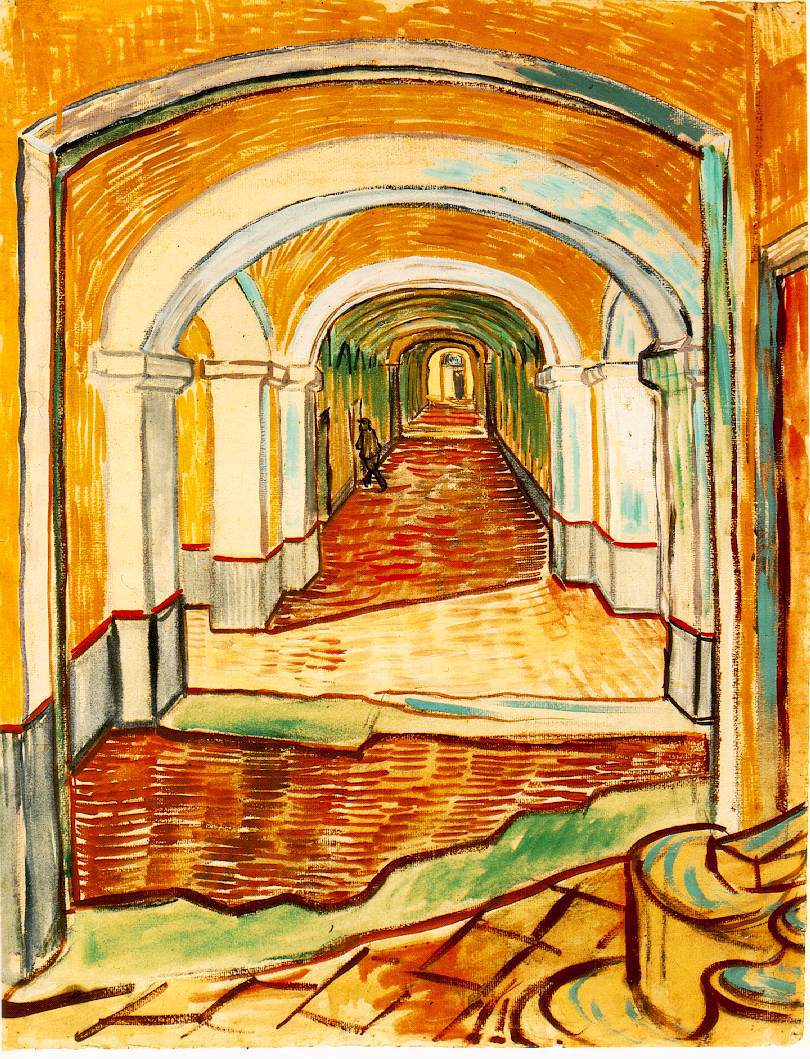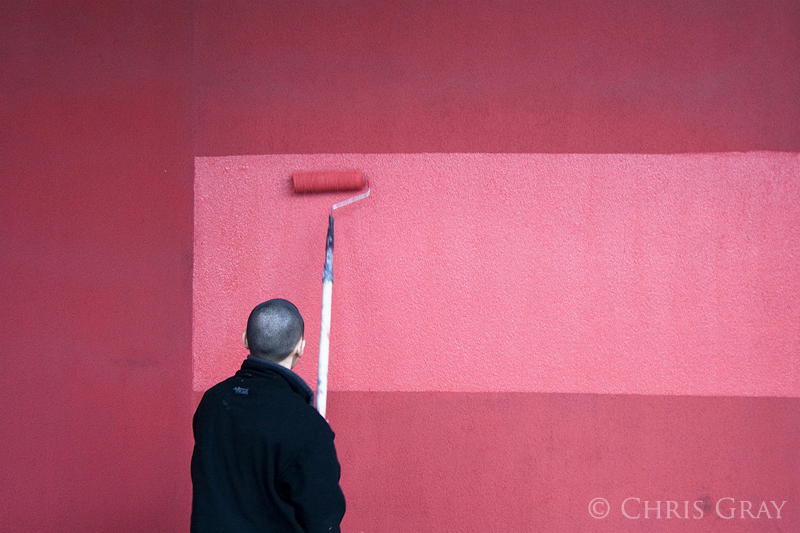Appreciating the art in the full extent as intended!
Asher, you are dead wrong. Are you saying that when a person walks into a gallery and looks at a work of art you need some background from the artist to appreciate it.
Bill,
I must let you know that "Appreciate", as used in my writing about "appreciating art" is not meant to refer to merely sensing, detecting or reacting somehow to the physicality of something, like a weight falling on one's foot, seeing a pretty color, observing a flower or being confronted by a picture with bold bright colors and obviously made brush strokes and a form of some hallway and a man. As long as any person is alert and not challenged with processing sensations, reactions to what is experienced will occur and likely could be positive. That, however can be far from appreciation of that particular work. One could swop another object and get a like reaction. That would show that the observed reactions and what you term appreciation, are likely superficial and not really appreciation of
that particular work. The latter case is my area of interest and writings: appreciation related to that
unique work of art.
I use "appreciate" with this far more demanding purpose. It's so different from the trite examples, above, of "reactions" to art, or in the equally simple manner employed in your post. A unique work of Art requires more of us and then in return has more to offer and deliver.
That image you show cannot be missed! Like the cherry flavor of antibiotics given to a child, it can even give pleasure. That child has of course, no true appreciation of the value of the antibiotic to its life nor appreciation of the art in anything but a superficial perhaps visceral way. Even a teenager might still not be able to fully appreciate that spoonful of medicine nor much more the art. If either were so easily appreciated it would save a lot of funds devoted to education. So, to the "appreciation" of art:
I'm not saying that one needs some deep background to enjoy the artist's work to some extent. One can march into the gallery, look at your bright colored bold picture and be enthralled. Chances are, however, that far more extensive appreciation follows education, cultural assimilation or else a simple introduction. The reaction we have might may well be
part of the array of reactions, experiences, feelings and ideas the artist had built into the form. Chances are, however, that there's more, much more!
You may find an exception, but from all my association with galleries, many visits and discussions with docents and curators, art
needs introduction. Why? They all believe that without some orientating information, most works of art are not necessarily or even commonly, fully accessible, just on their own. There may be exceptions. I did give a few such as beauty, a child, a flower and such.
The reason is that, Art being a cultural thing has dependencies. We are, after all, each of us, from different parts and times of that changing phenomenon. It is highly unlikely that all of us will "get" a painting and thus "appreciate it" as the artist intended first time around without some introduction. There is no wish for us to have the
same appreciation as the artist. We just need to be introduced to the context, references and dependences of that art. That way we have more access to the artists full aesthetic creation. The artist, no doubt, had some particular intent, some background and/or motivation. She or he had ideas that were in some context. All this influenced
how the form of the art was made, that form itself, that particular technique and style and no others! It's all
that to which I'm referring in "appreciating" art.
To appreciate the art of the artist as "this particular art of this particular artist" and what kinds of ideas and feelings they wanted to confer to us, requires some preparation.
Yes, we can enjoy, be entertained, amused or thrilled by the work, and in that sense "appreciate" it, but that's not the sense in which I use "appreciate".
One use is simple and has no necessary relationship to the artist while the other is more demanding, completing an arc of communication between the artist and the observer, even if the artist is no longer able to speak for him or her self.
I hope this is now clarified!
Asher




